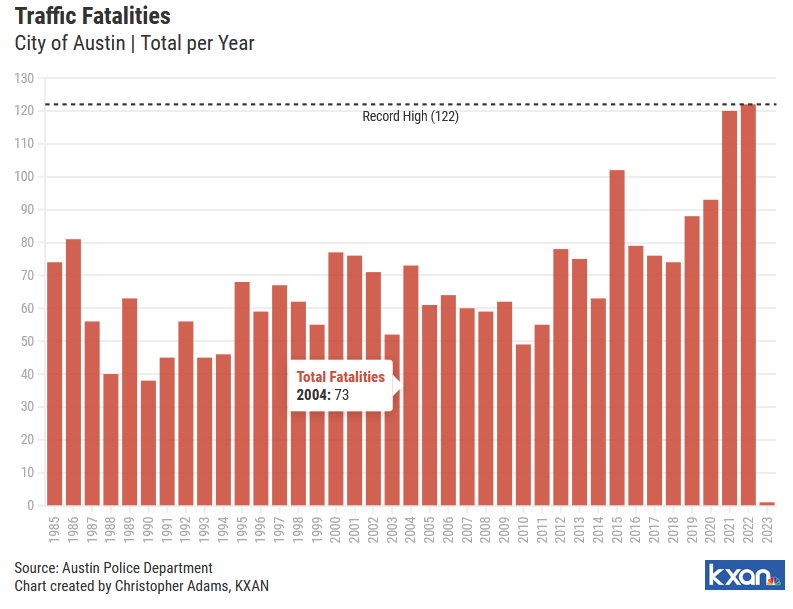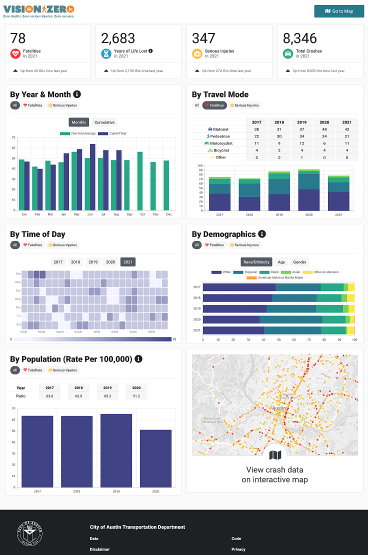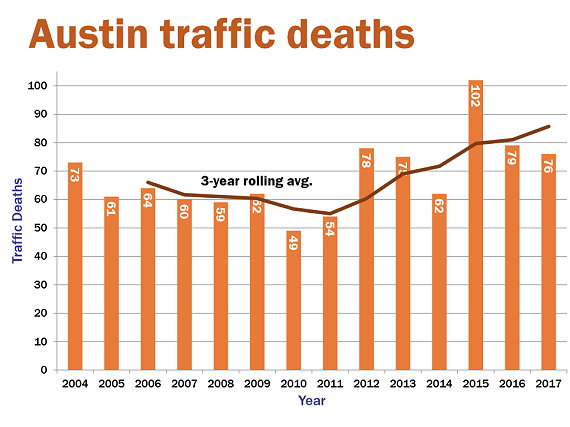 AUSTIN, Texas – The U.S. Department of Transportation announced this week that the City of Austin will receive a $22.9 million grant to make its streets safer for everyone. The grant is part of the $5 billion Safe Streets and Roads for All program, which was established as part of the Bipartisan Infrastructure Law. In total, Austin Transportation plans to implement safety improvements at more than 60 locations through this grant, with at least half of project funding allocated to underserved communities.
AUSTIN, Texas – The U.S. Department of Transportation announced this week that the City of Austin will receive a $22.9 million grant to make its streets safer for everyone. The grant is part of the $5 billion Safe Streets and Roads for All program, which was established as part of the Bipartisan Infrastructure Law. In total, Austin Transportation plans to implement safety improvements at more than 60 locations through this grant, with at least half of project funding allocated to underserved communities.
“This is an investment in saving lives, especially by reducing too frequent collisions with pedestrians and cyclists,” said Rep. Lloyd Doggett (D-Austin). “This federal funding supports City efforts to assure safer, more accessible and inclusive transportation for our neighbors across Austin, including economically disadvantaged neighborhoods where a disproportionate amount of traffic-related injuries and fatalities have been occurring.”
Austin has a proven record of reducing severe crashes through its Vision Zero safety initiatives. Safety improvements have led to a 31% reduction in the annual number of fatal or serious injury crashes at major intersections and a 17% decrease in fatal and serious injury crashes on the city’s High-Injury Roadways. Austin voters have consistently shown their support to make streets safer, approving Vision Zero safety investments in 2016, 2018 and 2020 Mobility Bonds.
However, much work remains in a city of more than 280 square miles and a rapidly growing population. Last year, 117 people died on Austin streets and hundreds more were seriously injured. “As a member of the Austin City Council, I supported Austin adopting Vision Zero as a policy goal and establishing a new framework when it comes to road safety,” said Rep. Greg Casar (D-Austin). “Traffic violence is a public health crisis that affects everyone, especially poor communities. I’m thankful to the USDOT for putting emphasis on resources where they are needed the most.”
Austin’s underserved communities continue to disproportionately die and experience serious injuries on the roads. Based on available data, the Black/African American community makes up a disproportionate share of severe crash victims and the Hispanic and Latino community makes up an increasing share of severe crash victims in Austin.
“This grant will accelerate Austin’s ability to deliver life-saving infrastructure improvements to our community. It is through a team effort that we will end the tragic and preventable fatalities and injuries on our roadway system,” Mayor Kirk Watson said. When it comes to evaluating specific locations and treatments for safety improvements, Austin takes a systemic approach. That means evaluating the safety and equity impacts of engineering treatments and selecting context-specific tools that are going to make the most difference. Those tools could include traffic signal installations, high-visibility crosswalks, bicycle and pedestrian facilities, added turning lanes, medians or other changes.
You can find the news release from the U.S. Department of Transportation here.
The City of Austin Transportation Department works to provide a safe, efficient, innovative, cost-effective and sustainable transportation system that connects roadways, bikeways, walkways and transit systems in order to bring improved access and mobility to our community. We are taking proactive steps to engage and educate the community. Visit AustinTexas.gov/Transportation.
 AUSTIN (KXAN) — A Texas senator from Georgetown was arrested by the Austin Police Department and charged with driving while intoxicated early Tuesday morning. Online jail records show Charles Jeffrey Schwertner, 52, was booked into the Travis County Jail just after 2 a.m. Tuesday. According to APD, officers conducted a traffic stop at about 12:46 a.m. at the intersection of Avenue B and West 45th Street. That’s near The Triangle in central Austin. During the interaction, officers arrested Schwertner, police said.
AUSTIN (KXAN) — A Texas senator from Georgetown was arrested by the Austin Police Department and charged with driving while intoxicated early Tuesday morning. Online jail records show Charles Jeffrey Schwertner, 52, was booked into the Travis County Jail just after 2 a.m. Tuesday. According to APD, officers conducted a traffic stop at about 12:46 a.m. at the intersection of Avenue B and West 45th Street. That’s near The Triangle in central Austin. During the interaction, officers arrested Schwertner, police said.
 AUSTIN, Texas – The U.S. Department of Transportation announced this week that the City of Austin will receive a $22.9 million grant to make its streets safer for everyone. The grant is part of the $5 billion
AUSTIN, Texas – The U.S. Department of Transportation announced this week that the City of Austin will receive a $22.9 million grant to make its streets safer for everyone. The grant is part of the $5 billion 


